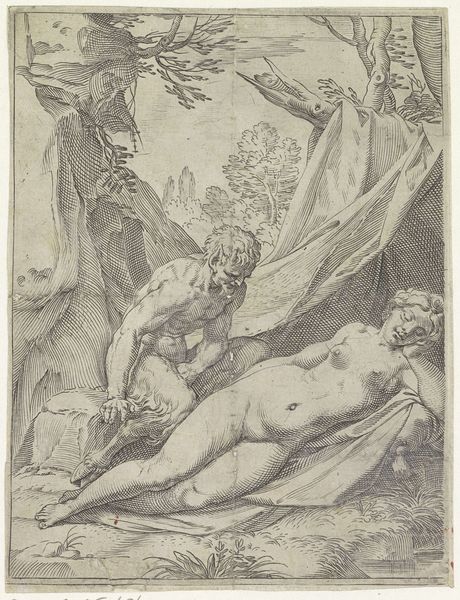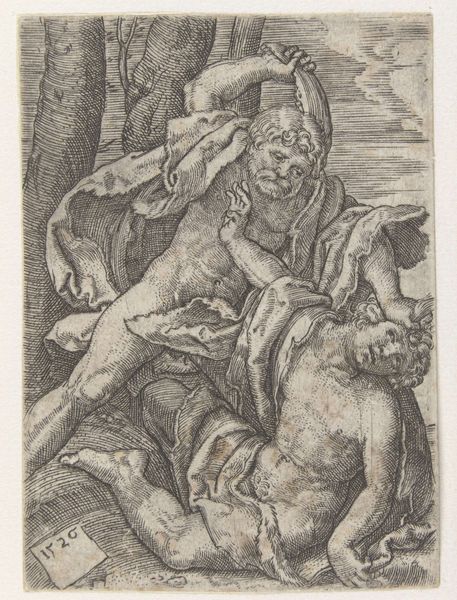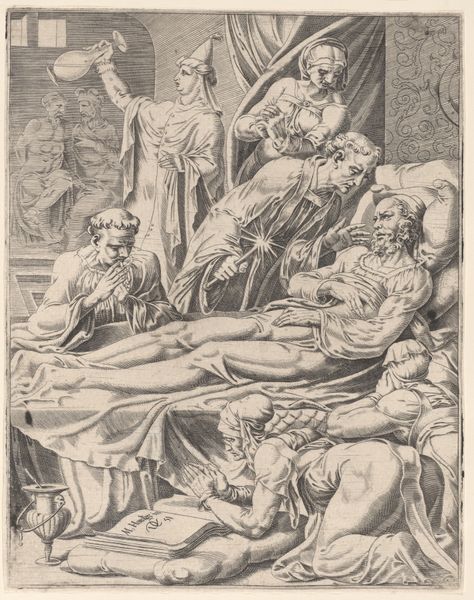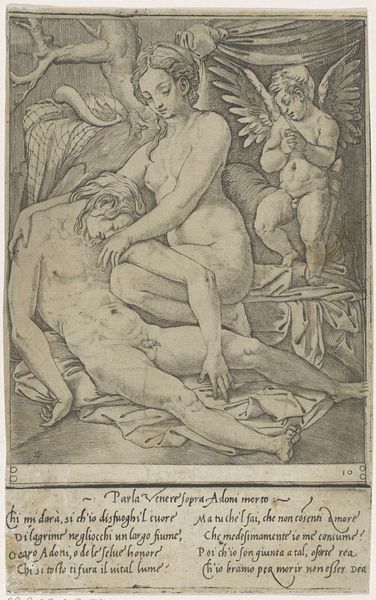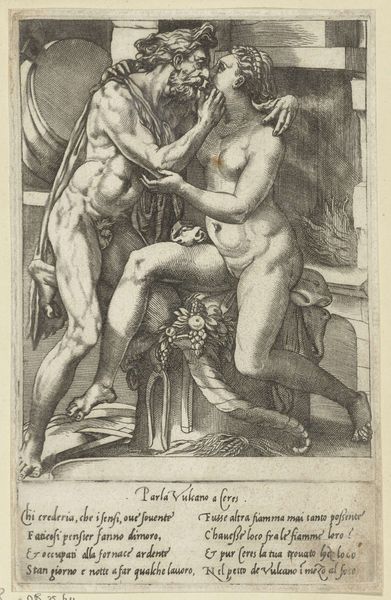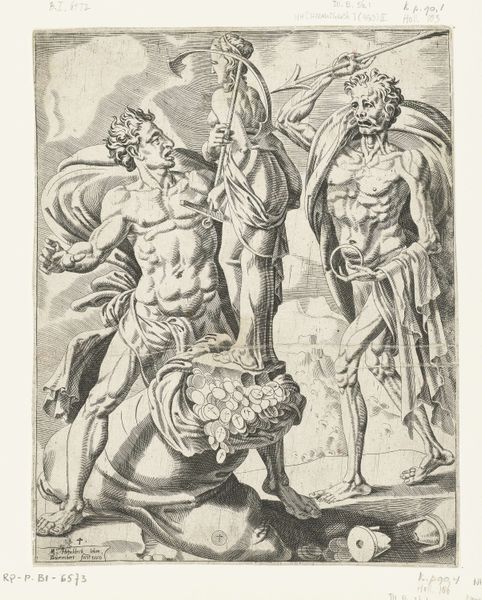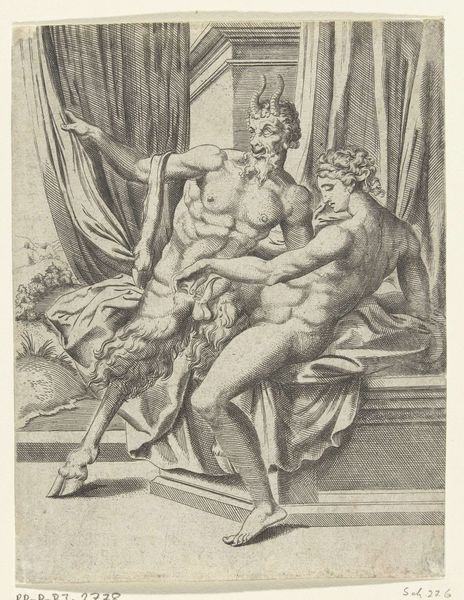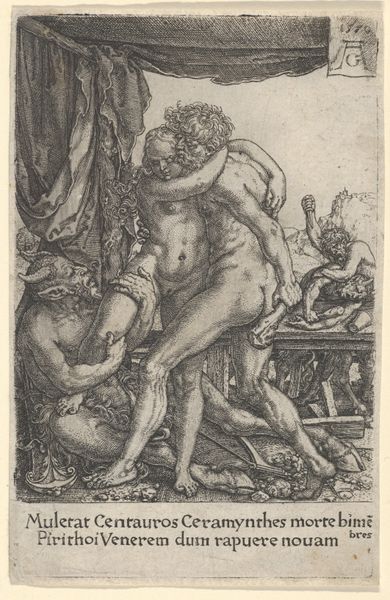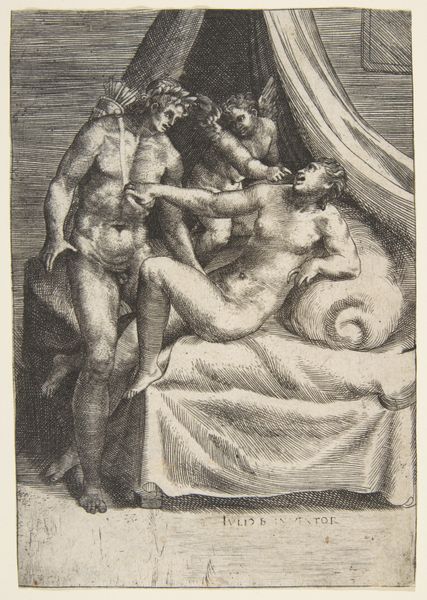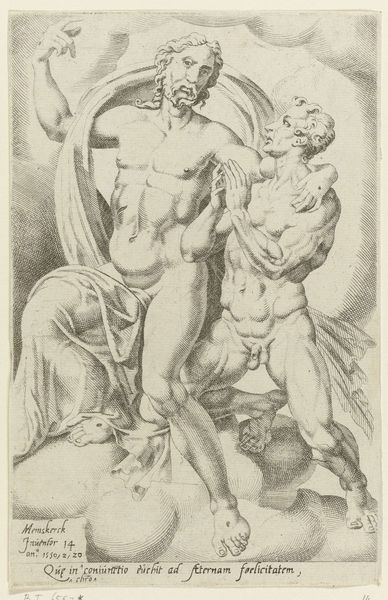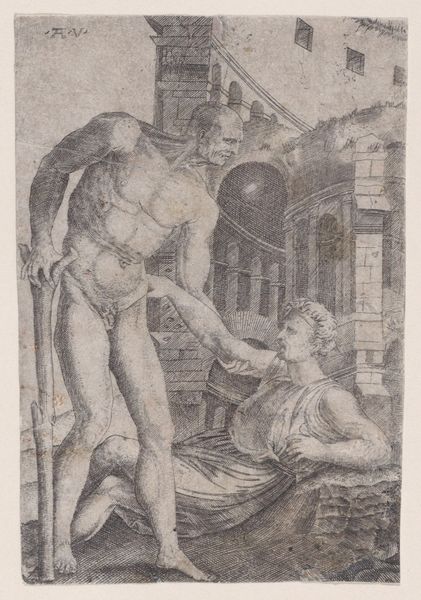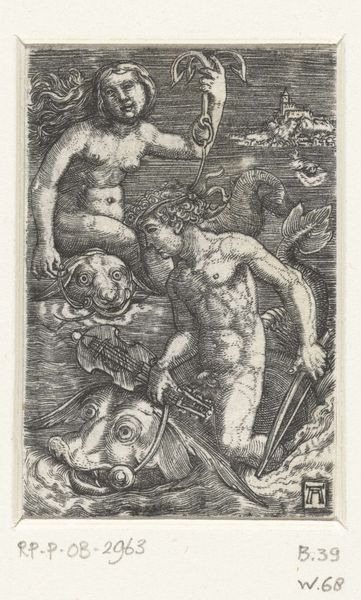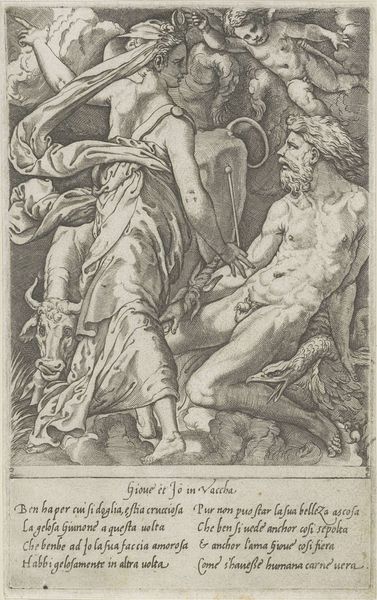
engraving
#
allegory
#
figuration
#
11_renaissance
#
italian-renaissance
#
nude
#
engraving
Dimensions: height 203 mm, width 135 mm
Copyright: Rijks Museum: Open Domain
Curator: Agostino Carracci’s engraving, "Nymph and Satyr with Plumb Bob," dating back to approximately 1590-1595, is now held in the Rijksmuseum collection. It strikes me immediately as a scene steeped in sensuality and implied power dynamics. What are your initial thoughts? Editor: Well, given the overt display of the nymph’s body and the satyr’s gaze, I'd agree there's a clear tension. The satyr looms large, wielding the plumb bob as an instrument that could symbolize both measurement and, perhaps more pointedly, dominion over the recumbent nymph and child. Curator: Precisely. Consider how the satyr, a figure representing raw masculine energy, uses the plumb bob – an architectural tool typically associated with order and precision – in such close proximity to the vulnerable nymph. It hints at the imposition of societal norms onto female sexuality and reproduction. Editor: Absolutely, and the composition further enhances that reading. The nymph is passively reclined, nearly offering herself for assessment while the plump bob is positioned as a kind of vertical intervention within the space that could even speak to a tension concerning who belongs here. Curator: I think Carracci, whether intentionally or not, unveils the intricate ways power and gender are intertwined. The very presence of a nude nymph, in contrast with the raw but clothed Satyr, positions her as an object of scrutiny rather than a subject in her own right, solidifying this social commentary. And what to make of the child looking over its mother's shoulder? It hints at legacies. Editor: Perhaps pointing towards anxieties around social inheritance and the reproductive burdens placed upon women of that era? It prompts one to reconsider narratives within similar mythological depictions during the Renaissance, highlighting their political undertones that sometimes get overlooked when fixated on notions of beauty or classical inspiration. Curator: It certainly complicates straightforward readings. The very idea that this encounter needs justification, symbolized by an instrument of precision, highlights inherent social pressures present around sensuality and gender expression. It serves as a valuable example for understanding broader social narratives depicted through mythological subjects. Editor: Ultimately, this artwork gives us the language to unpack societal undercurrents of that period. By critically considering the power structures within this piece, we can reassess comparable artworks from that moment and question those standards when displayed today.
Comments
No comments
Be the first to comment and join the conversation on the ultimate creative platform.
